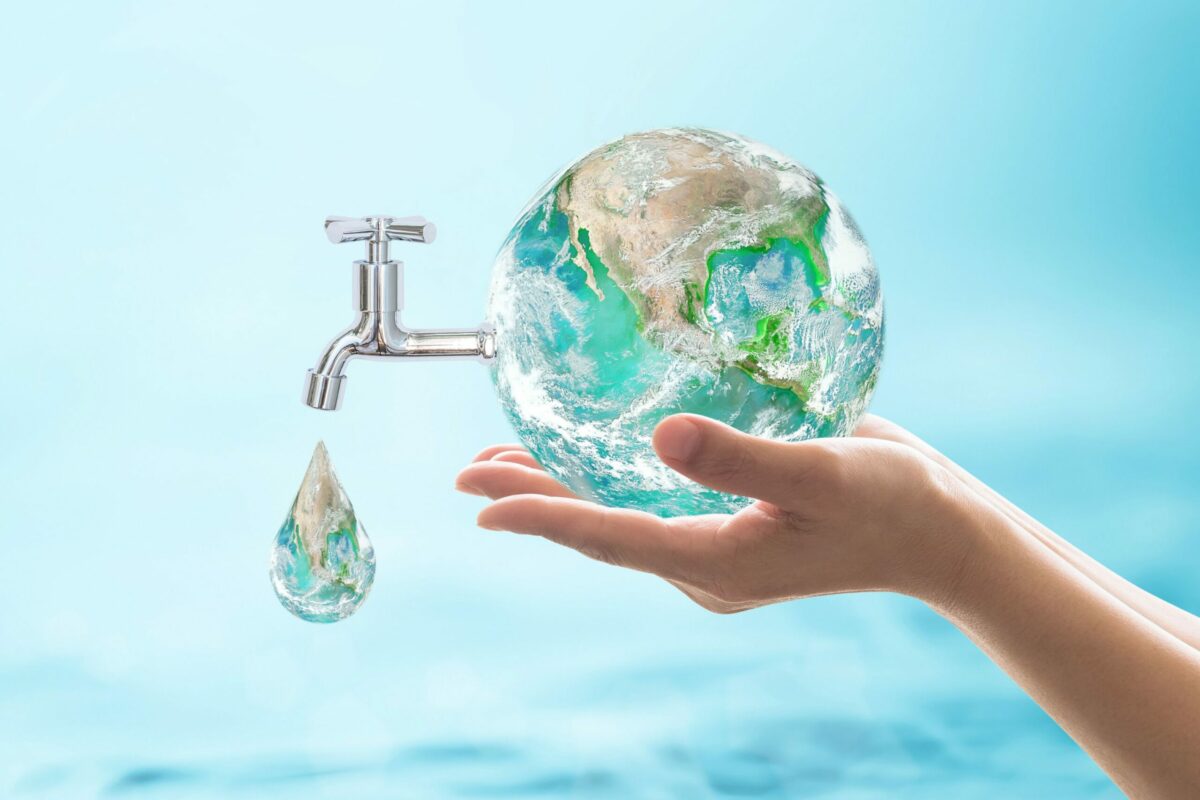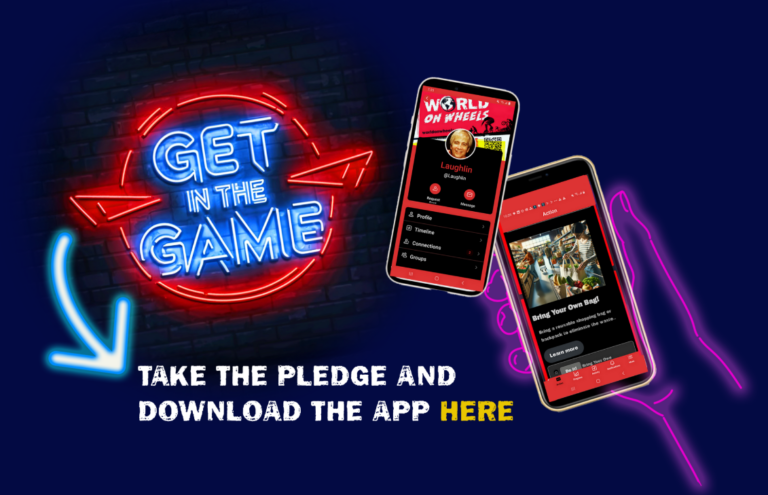Here at 2030orbust, We educate, inspire, engage and equip people to end the climate crisis. In doing so, I will do an ongoing blog on how we can make choices every day in our lives to change the path we are on to something more sustainable. I hope that you find this information helpful, and more so, hope you will pass this on to friends, family, colleagues, and mostly to our younger generations. I encourage you to join in on the game of CLIMATE TAG. Think of this as paying it forward for real climate change….TAG YOU ARE IT ! I encourage you to download our app so that you can track your impact by way of changes to your carbon footprint.
Please join in on this discussion, add your comments and help build a community of like minded people who are committed to change.
Let’s Talk About Water…
As time passes, we are seeing, up close and personally, that the drastic effects of climate change are increasing at a rapid
pace. Now is time that we each need to begin looking at our own relationship with the environment and how our hundreds of daily choices impact our ecosystems. I would like to begin with one of the most basic needs in our lives here on Earth.
Water.
Potable water is something that we take very much for granted. Only 3% of the world’s water is freshwater (including lakes, rivers, ponds, wetlands, glaciers, icebergs, and groundwater) and of that little bit of water, a very high percentage of it is polluted. These ecosystems make for the homes of nearly 12% of all animals and 40% of fish varieties. Insects, amphibians, crustaceans, as well as local and migratory birds that are dependent upon them. They all thrive or suffer based on how this balance is kept or lost. All of these systems are failing to various degrees and very quickly at that.
We, as a whole, waste an amazing amount of water that requires lots of energy for the manufacturing of chemicals (energy for mining, manufacturing, and distributing) and machinery (electricity and fossil fuels to build it, run it, and maintain it), in order to get it to our faucets. It is estimated that up to 95% of our household water gets wasted. This then starts the process of going down to your nearest waste treatment plant where it is processed again using more energy and chemicals for water that was likely never used. These chemicals that are used at both ends of this cycle end up back into our waterways and ultimately degrade water all over the Earth. The more water you save the more money you save yourself, your entire community, and very much so, save your fragile local ecosystems.
Wasting water adds instability to the system itself by depleting the water tables and aquifers of water that has been there for as little as 10-20 years (eastern US) to 1000’s of years (western US). The new water that replaces what we take is likely to be more contaminated by chemicals and pesticides than before.
Just a few stats:
-
- In 10% of American homes, there are leaks substantial enough to waste 90 gallons of water every day. (32,850 gals or $550/year)
-
- When a shower head leaks at only 10 drips per minute, it wastes over 500 gallons of water per year. ($8.40/year).
-
- On average, Americans use up to 80-100 gallons of water each day at home.
-
- In 2024 NYC water and sewage costs are $12.61 per 100 cubic feet (748 gals)
Let’s see what changes you can make in saving water for.the.rest.of.your.life: I have been challenging myself to save water with the changes below:
How little water can you use to do any task that you do anywhere you are? Let’s start with the beginning of our day at home:
-
- Brushing Your Teeth: Start by putting just a few drops of water on your toothbrush (you really don’t need more), add toothpaste, and don’t turn the water on again until you fill your glass with the littlest amount of water to rinse your mouth and toothbrush out. You can save lots of water by not running it the entire time. Your choice: 4 gals or 4 oz?
-
- Showering: Here is a place that we really waste water. Average showers are 8.2 mins using 2.1 gallons/min. I, like just about everyone, like a nice long hot shower. I have made a huge change. Run your shower at the lowest pressure to keep you warm and be able to lather up and wash. You will be amazed how little you really need. See if you can turn down the temperature a couple of degrees to save energy and still be comfortable for your 5 or even 3 minute shower. Want to really save? Take a navy shower by getting wet, shut off the water, lather up, clean up, rinse, and then get out. If you are applying conditioner, Turn down/off the water. You can save lots of water by not running it the entire time. Your choice: 17 gallons or 6 gallons, or maybe even less?
Just a few tips:
-
- To minimize water loss, use a bucket with a handle to capture the water that is usually wasted while you wait for the water temperature to be optimal. If you have a bathtub with a shower diverter, you can capture water both while it’s warming up, and when you release the shower diverter at the end. When I shower now, I use about the same amount of water taking the shower as I save in the bucket! About a gallon.
-
- Use that water to flush the toilet, wash dishes with, feed your plants, hand wash clothing, mopping, etc.
-
- Don’t shave in the shower while the water is running. It will waste an estimated 4 more gallons, you can do it with a quart or less in your sink.
-
- Buy water saving fixtures for all of your sink faucets, shower heads and (if you can afford them) get lo flow toilets.
-
- Also apply these techniques to washing your hands or face anytime you’re at the sink. If you are lathering up, turn off the water.
-
- Washing Dishes: Start observing yourself when you are washing dishes, or doing anything else at sink in your home. Watch how your family does it and begin to realize how you could change your habits. I have never understood how people walk up to the sink turn on the water and just let it run for 5-10 minutes while they are cleaning or preparing food, and even walk away from the sink as well. When you are at the sink doing anything, starting by turning the cold water on the lowest level to wet whatever it is you want the water for. Then turn it off. Wash, fill, scrub, rinse, etc and then rinse on the lowest level as well. Just do your best to not to be running water that is just going down the drain for no good reason.
Just a few tips:
-
- Do your best to try not to use more hot water than you truly need.
-
- Keep a bin or bowl in the corner of the sink to save as a place to draw soapy water from for your sponge. Fill it with the water you saved from your shower.
-
- You can scrub a pot with dirty water and then rinse it just as cleanly.
-
- You can save lots of water by not running it the entire time.
-
- Remember, use the least amount of water to get the job done by turning on the faucet to just a dribble. Your choice: 4+ gals or less than 1 gal
-
- Washing Vegetables: When you get back from the farmers market with your bounty of vegetables, fill a bowl of water to wash or rinse clean the vegetables and then put them in a colander for a quick final rinse. You will save a lot of water by not running water the entire time. Your choice: 3 gals or 1 gal
-
- Saving with the Dishwasher: Depending upon efficiency of particular models, dishwashers use anywhere from 4 to 10 gallons of water to complete a full cycle. That is only for the water that the machine draws for the cleaning, not the water that you use rinsing dishes with before putting them in.
Just a few tips:
-
- Read your instructions thoroughly on how to properly load the dishes. If they are put in wrong, you will not get dishes as clean.
-
- Don’t rinse your dishes, pots or pans before putting them in the dishwasher.
-
- Wipe them clean with a sponge before putting them in.
-
- Use the economy cycle, it will take longer, but use much less energy.
-
- Do not use heat to dry the load, save 15% of the electricity use by opening the door and letting them dry.
-
- ALWAYS do full loads! But don’t overfill.
-
- Don’t pre-rinse.
-
- If you are buying a new dishwasher look for the one that is the proper size for your use. Getting one that’s too big is more of a waste unless you need to do multiple loads a day. And find a model that is both energy and water efficient.
-
- Toilets: It is estimated that 27 percent of indoor water use is just from the toilets in our homes and workplaces. Consider flushing less often. Use the water that you might have captured from the shower to use in the toilet as a possibility. If you can get your head around the idea of the practice: “If it’s yellow, let it mellow. If it’s brown, flush it down.” Imagine how many toilet flushes you can avoid by doing this each year.
Just a few tips:
-
- Don’t use your toy as a garbage can or a disposal.
-
- If you don’t have low flow toilets, you can finesse a regular toilet to only do a partial flush, for, say, a little bit of pee.
-
- When you have finished using chemicals to clean your toilet, this is a great time to use a bucket of captured water that you have to flush it down.
-
- If you have any leaks, talk to your superintendent, landlord, your better half, or, better yet, learn how to fix it and stop the leak yourself. They are pretty simple to fix with proper tools.
-
- Laundry: We as a country, are doing an awful lot of laundry and use an awful lot of energy to complete the job. We are very quick to throw something into the laundry basket that could very easily be worn again. For every piece of laundry like that, it does require the water, energy, and chemicals (soap, bleach, softeners, dryer sheets, and fragrances) that end up back in our waterways. Aside from that, we have found out that the number of micro plastics that shed off of our clothing is very impactful on our waterways and the wildlife within them and surrounding them. Outside the US, there are very few people that use dryers and we need to learn how to buy folding drying racks ourselves and stop wasting the energy and costs from them.
Just a few tips:
-
- As often as possible, use cold water for your wash and hang to dry. With a lot of today’s technical clothing, they are virtually dry when you get them out of the washer. Also drying these fabrics break down the fibers of the clothing that we have spent good money on.
-
- Dry lightweight and heavyweight clothing as separate loads
-
- Buy and use wool dryer balls in all your loads as they help fluff up and dry clothing, faster. You can scent these with essential oils and stop buying dryer sheets. They are very long lasting and worth the money. I have used 6 of them consistently for over 12 years and they have not gotten noticeably smaller. They can be found at Trader Joe’s at a very reasonable price.
-
- Pre-soak stained clothing overnight in ECOS OXO Brite (found at Amazon). This is the cleaner version of OxiClean without all of the extra ingredients, made in the US, and the most environmentally friendly version out there.
-
- Use vinegar instead of fabric softener. it also helps with mild mildew odors, helps dissolve soap residue and use whenever an wherever you would use fabric softener.
-
- Lawn, Gardening, Sidewalk Cleaning: Please consider the amount of water that is used outside of your home for various tasks as we tend to waste water when we are in unfamiliar places.
Just a few tips:
-
- When watering your lawn manually, or with a sprinkler and hose, try to limit the water that you presently use. Water in the early morning to avoid evaporation that would occur later in the day. This can save you up to 40% and don’t forget every gallon of water used through your tap creates a per gallon fee of sewer charge.
-
- Set up a filtered rain barrel for times that are dry. However, check local ordinances about this. Some localities are now banning water barrels as they claim that water that falls on your property is public water.
-
- If you have an automated system, try setting it to use less water. Underground systems often have leaks so you could put a meter/gauge at the front end to see if you might have leaks.
-
- Make sure that you watering patterns aren’t watering the sidewalk, driveway, your house, or anything else.
-
- Consider using irrigation hoses in garden beds as they are so much easier to identify leaks in.
-
- Do not spray driveways and walkways to clean them. This is an enormous waste of water. Brush, or sweep them clean and then, if necessary, do a light spritz if you must.
-
- If you haven’t already, please consider making as much outside space as possible for gardens that attract beneficial insects and birds while using the least amount of water possible.
-
- Limit your use of dangerous chemicals and fertilizers on your lawn and gardens. There are many natural substitutes for these things.
-
- And if you’re washing your car at home, use that captured water that you have for part of the cleaning or rinsing process.
That’s it for now! TO BE CONTINUED….

Mark Overton has been a champion for the environment from a very young age as his family was very active in the 60’s being very early recyclers and environmental ambassadors. During much of his youth, he spent his spare time camping, backpacking and volunteering at the Greenbrook sanctuary within the Palisades Interstate Park System.
He has spent most of his 47 career in the ever-demanding world of professional Broadway and touring theater dedicated to the backstage life of “The show must go on”.
In retirement, he has been committed to volunteering in the outdoors and to help protect the environment and to educate and help others to commit, respect, and care for our beautiful planet. He is presently volunteering with the NYNJ Trail Conference at the Welch Lake Educational Center as well as the Westchester Parks Foundation. He looks forward to making an impact with this organization closing this carbon gap by 2030.

